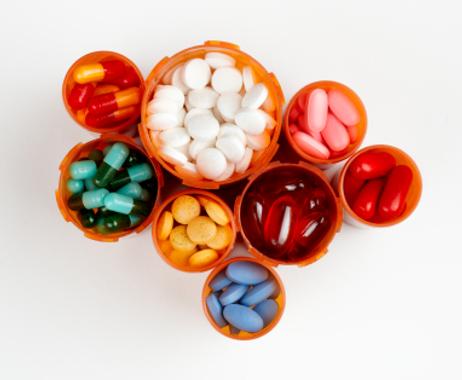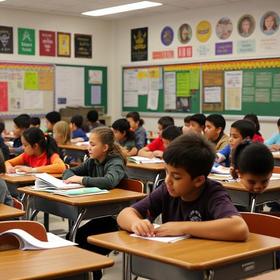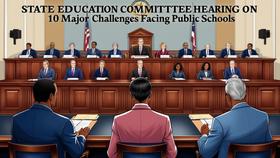Public School Achievement: Are Stimulants a Part of the Equation?
Students under pressure to make good grades and keep up with a myriad of extracurricular activities are turning to an unexpected place to get the edge they need to succeed: stimulant drugs. Many high school students across the U.S. are turning to prescription medications typically used to treat ADD and ADHD to increase their energy levels and focus when their physical bodies cannot do it on their own. The increased use of these drugs has many educators and health care providers concerned, but students who have seen their results continue to turn to the medications - and turn their friends onto them as well.
This video looks at the effects of Adderall on study habits.
Driven to Excel
The Herald-Tribune reports that students in high school today face enormous pressure when it comes to competing with their peers for class placements, test scores, and college entrance applications. The medications have been used on college campuses for some time but are slowly trickling down to the high school level as well. Students find that stimulant use gives them the necessary edge to perform at a higher level with less sleep required.
As many as 200 students sent their views on prescription medication abuse to the New York Times, frequently eluding to the fact that pressure to perform – from parents, teachers, and peers – led them to try the drugs in the first place. Many of these students found that the drugs worked to help them study harder, focus well, and score higher on tests. Ongoing use of the drugs resulted in serious side effects for many students. However, by the time they saw the negative effects, many were addicted to the substances and could not easily stop taking them.
Growth of Stimulant Use
Care 2 suggests that stimulant use is becoming more common at elite high schools across the country. These drugs are not specific to a precise area, but they do seem to be more prevalent among students who are conscientious about their grades and looking ahead to college. Drug Enforcement Agency (DEA) special agent Gary Boggs stated at Care 2, “We’re seeing it [prescription drug use] all across the United States.”
Drugs used for this purpose, including Adderall, Vyvanse, Ritalin, and Focalin, have been categorized by the DEA as Class 2 controlled substances, along with cocaine and morphine. The classification is reserved for the most addictive substances – the medications listed above are considered the most addictive drugs available with a prescription. However, few students think about their addictive properties – or the legal ramifications of sharing them with classmates – when they begin using the drugs to up their academic performance.
“It’s throughout all the private schools here,” New York psychologist DeAnsin Parker told the Herald Tribune. “It’s not as if there is one school where this is the culture. This is the culture.”
This video discusses Focalin, which is a nervous system stimulant used for the treatment of attention-deficit hyperactivity disorder (ADHD).
Types of Stimulants Seen in High Schools
The medications used by high school students today are commonly prescribed to treat attention deficit disorder and attention deficit hyperactivity disorder. While these drugs tend to calm down patients who have been diagnosed with these disorders, the drugs work very differently in the rest of the population. Students discover the drugs can rev up their energy levels, make them hyper-focused, and even give them a joyful feeling of well-being.
The New York Times lists features of the most popular drugs used for this purpose, including:
- Adderall – This drug was introduced as a treatment for ADD and ADHD in 2001, and it is currently the most popular type of “study drug” used by students today. The effects of Adderall last eight to 10 hours, and the generic form is one of the cheapest options in study drugs currently.
- Vyvanse – Introduced on the market in 2007, Vyvanse does not have a generic equivalent at this time, so it is more expensive to procure than Adderall. However, some students prefer this option because the absorption of the drug is smoother and provides the same type and duration of effects.
- Ritalin – This was the first drug to be used for treating ADD and ADHD, coming onto the market in 1955. The medication is the least expensive, and the shorter time frame for the effects (three to four hours) makes it an attractive option for students worried about sleep interruption.
- Focalin – Like Vyvanse, there is no generic available for this drug, which was introduced to the market in 2005. The effects are similar to Adderall and Vyvanse, lasting about eight to 10 hours. However, some students experience unpleasant side effects like headaches and jitters when they take certain mixtures of this drug.
- Concerta - While the other four drugs are commonly crushed and snorted, Concerta is difficult to crush into powder. This fact has made this drug a popular choice for many psychologists and physicians worried about drug misuse. The effects of Concerta last about 16 hours, which significantly impacts a student’s ability to sleep while using this drug.
Adderall and Vyvanse fall into the category of amphetamines, while Ritalin, Concerta, and Focalin are all methylphenidates. The number of prescriptions for these drugs has increased dramatically in recent years, with a 26 percent increase from 2007 to the present. Some students using these drugs as study aids get the medication from friends who have prescriptions. Others fake the symptoms of ADD to get their prescriptions from doctors.
This video gives an overview of amphetamines and methylphenidates, which are two key ADHD stimulant medication classifications.
Side effects of these drugs include severe mood swings, depression, heart irregularities, and exhaustion. Withdrawal from the drug can result in psychoses. Doctors currently know little about the long-term effects of the drugs since most have been on the market for a relatively short period.
Questions? Contact us on Facebook and Instagram. @publicschoolreview
#StudyDrugs #AcademicPressure #AdderallAbuse #StudentHealth #PrescriptionMisuse @publicschools















